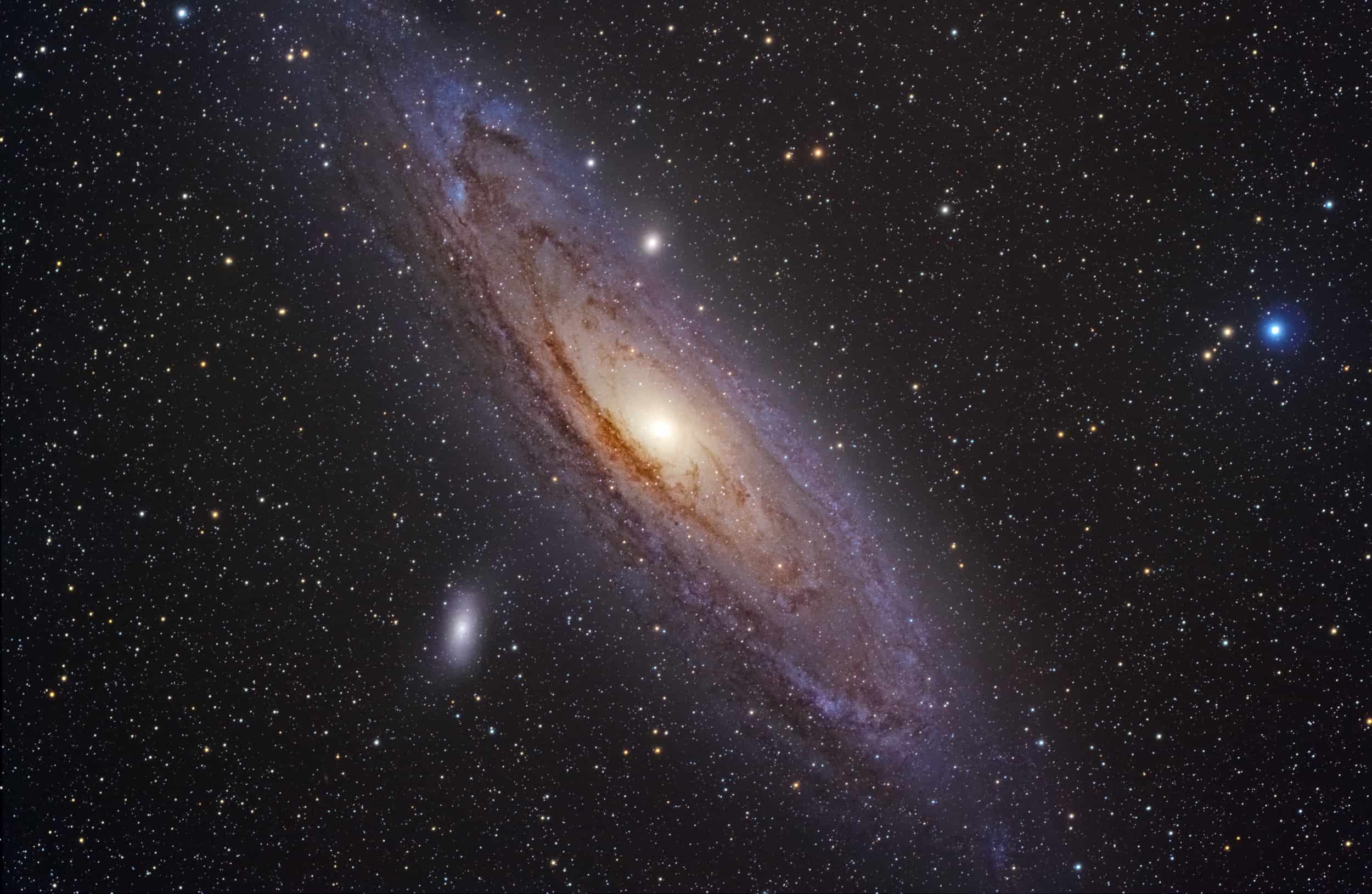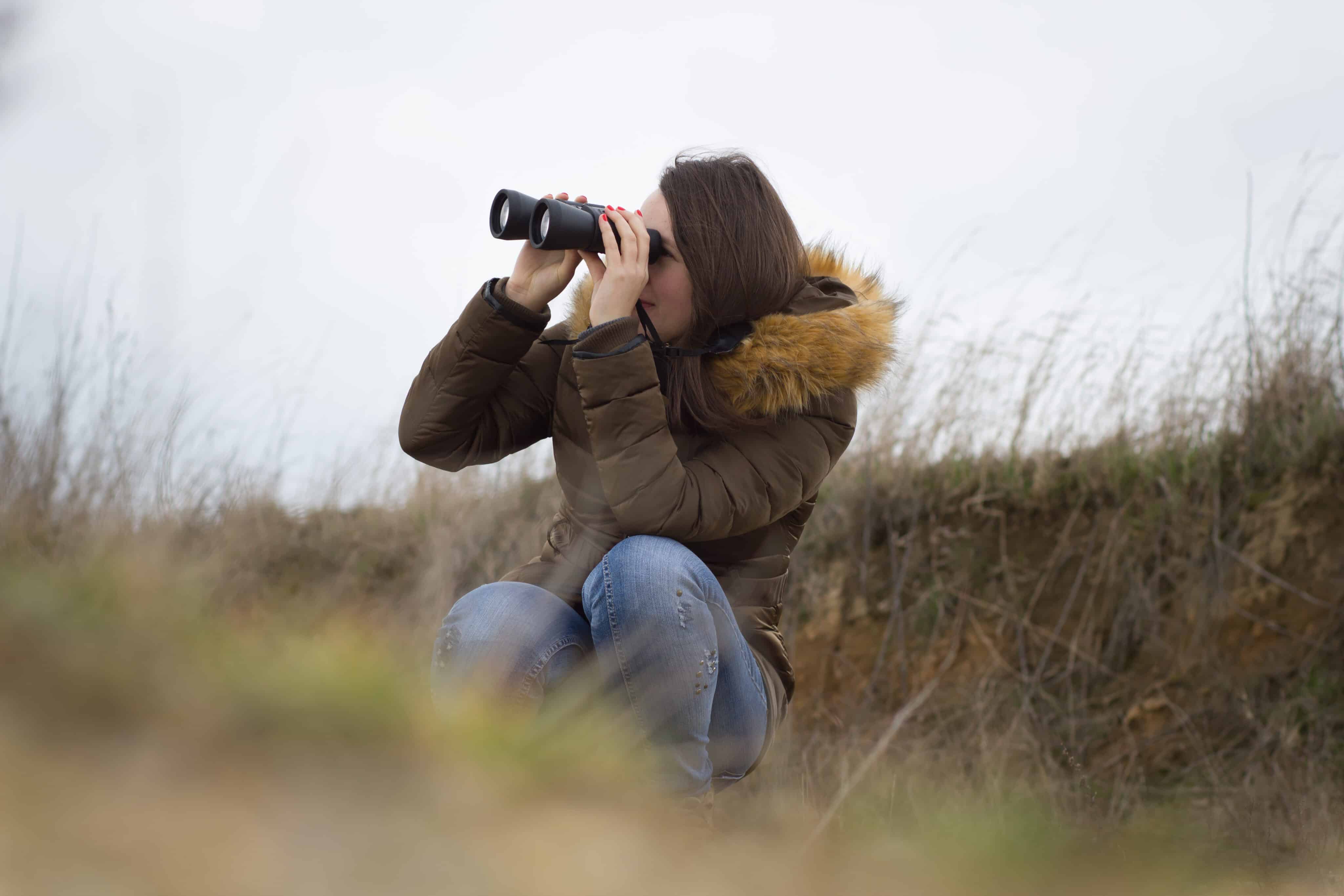Contents
12×25 Binos: What to Expect
Binoculars are one of the most important assets in an amateur astronomer’s arsenal. They provide easy grab-and-go portability while allowing you to crank up the power and light gathering on objects that may need it. For daytime users, binoculars can also be a great tool for walking or exploring, providing better views of wildlife and landscape, especially at distances that are difficult for the unaided eye.
Binoculars come in many shapes and sizes, with a wide range of magnifications, weights, eye relief sizes, and apertures. Whether it’s viewing the moon, trying to get a closer look at that faint fuzzy in the sky, or birdwatching, we all want the best binoculars we can reasonably get for our application.
One of the best size options when it comes to looking for binoculars that can satisfy both worlds is a set of 12×25 binoculars. These numbers mean that the set of binoculars has two 25mm aperture objective lenses that provide 12x magnification when paired with the stock eyepieces. This provides a decent amount of aperture and a slight magnification while still keeping the instrument lightweight enough to be comfortable holding up for longer periods. The most common 12×25 binoculars seem to weigh in at slightly more than half a pound, which is plenty comfortable for both astronomy and daytime uses.
When it comes to the question, “How far can I see with 12×25 binoculars?” it can go in two different directions depending on your use. This article will go comprehensively go over both uses: for astronomy and daytime use.
For Astronomy Use

In astronomy, the most important thing to consider with a telescope, binoculars, or any optical system is the aperture. While magnification does have importance in certain applications, the aperture is what determines how dim of objects you can see and in what resolution you can see them. For any set of optics, the larger the aperture, the brighter and more resolved a celestial target will be.
A pair of 12×25 binoculars provides you with two 25mm lenses, which are just under an inch. This limits you to objects that are brighter than magnitude 10, which is perfect for many popular deep-sky objects. Because of the small magnification, most visible deep sky objects will appear as bright fuzzies with minor detail, especially if you hold the binoculars in your hands. For image stability purposes, I recommend investing in a tripod if you plan on taking more than just a glance at a particular object. Below I have listed some of the most popular binocular objects in the night sky.
The Moon has an incredible appearance in binoculars, showing more detailed views of craters and enhancing the color gradients that exist on the moon’s surface. This is probably the most impressive night sky object you will see in 12×25 binoculars.
The Andromeda Galaxy (M31) is another popular binocular object because of its large angular diameter (almost three degrees, six times wider than the full moon!) and its visibility to the naked eye. From dark skies, the Andromeda Galaxy can be seen with the unaided eye as a faint fuzzy. 12×25 binoculars slightly enhance this, giving a closer view of it. With a stable tripod, you should be able to faintly see its galaxy neighbors, M110, the elliptical galaxy, and M32, the dwarf galaxy.

The Orion Nebula (M42) is the real star of the show (no pun intended) in the winter night sky, a diffuse nebula located in Orion’s sword. With an apparent magnitude of 4.0, it is an easy target with both the naked eye and binoculars. Barely spanning over a degree in diameter, this one is a little bit smaller and dimmer than the Andromeda galaxy and requires more effort to pick out details, especially at low magnification. It should appear as a neat little fuzz, possibly even taking on a green hue if you stare for long enough.
The Hercules Globular Cluster (M13) is another glorious sight to see in the spring and summer in the northern hemisphere. M13 is one of the largest globular clusters in the night sky, hosting several hundred thousand stars in the constellation of Hercules. Spanning only 20 arcminutes across, it makes a great fuzzy target for 12×25 binoculars, but it isn’t easy to resolve individual stars without something with a greater aperture and magnification. Regardless, it is still a neat target to observe with any size optics.
For Daytime Use

12×25 binoculars are well-suited for daytime use, allowing great portability and compactness while enhancing views of wildlife and landscape. When it comes to how far you can see, it’s important to remember that magnification is not the sole factor. With a good quality pair of 12×25 binoculars, good light conditions, and clear air, you can expect to be able to see objects at a distance of several miles.
The 12x magnification does not directly affect the distance at which you can see objects clearly but rather determines the size of the image that you see through the binoculars. A higher magnification will make the image larger and reduce the field of view and make it harder to hold the binoculars steady. Because of this, it’s important to read the information on the FOV (field-of-view) of the binoculars. For daytime purposes, many binocular brands advertise different Linear FOVs, which is the width of an area that you can see at a specific distance. For example, “275ft/1000yds” would indicate that at 1000yds away, the width of your image spans 275 feet. This varies from model to model, but generally, you want to get the highest FOV possible to ensure the most comfortable viewing experience.
The aperture of the objective lens (25mm in this case) also affects the distance at which you can see objects clearly. Larger objective lenses can gather more light, which enhances the resolution of objects and increases the field of view but also makes the binoculars heavier and bulkier. In general, 12×25 binoculars are considered to be compact and lightweight, making them well-suited for daytime activities such as birdwatching and hiking. For long-range tactical purposes or astronomy, these are not typically recommended as they have a narrow field of view and may not provide enough light-gathering power or resolution for these applications.

